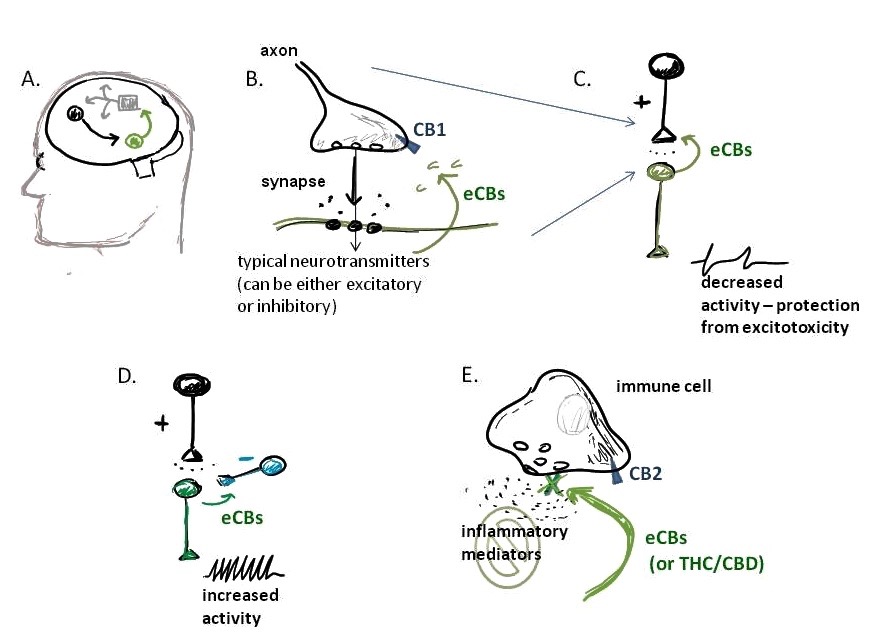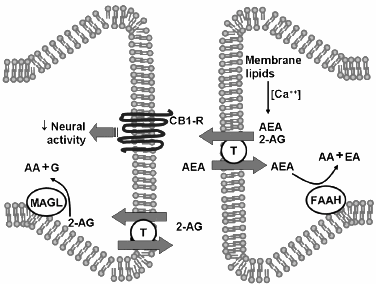By Gregory Gerdeman in O’Shaughnessy’s Autumn 2010
Endocannabinoids are short-lived signaling molecules that function as retrograde synaptic messengers at synapses of the brain.

A) Imagine three different areas of the brain: one communicates to the next through many neurons (brain cells), which send long processes (axons) to form connections (synapses) with the surface of target cells in the next brain area.
B) At synapses, conventional neurotransmitters are released from the ends of axons and bind to receptors on target cells, causing either an excitation or inhibition of that cell within its brain circuit. The endocannabinoids work in reverse, and bind to CB1 receptors on axon terminals, turning down the level of neurotransmitter release. The outcome of this signal —that is, the effect the cannabinoid receptor has on brain activities and higher order functions like emotion and memory— is very complex, and is inspiring new ideas of how the brain processes information and maintains internal balance, or homeostasis.
C) For example, when cannabinoids inhibit release from excitatory neurons (indicated by the + sign), the net result is a decreased activity of the target cell and its protection from excitotoxicity: a word that describes the deadly over-excitation of neurons in many pathological conditions such as stroke and epilepsy. This is a key finding, demonstrated by numerous labs looking in many brain areas, and reveals the endocannabinoids as an innate defense mechanism of the brain. It also helps explain how cannabinoids could help lessen the damaging effects of stroke, epilepsy and perhaps other brain traumas.
D) When endocannabinoids target certain strategically located inhibitory neurons (-), the net result is an increased activity in target cells. This can have complex effects, such as altering synchrony with other neurons in the network. Such a transient regulation of neuronal firing frequency by endocannabinoids is likely to be important for many brain activities, rang- ing from the regulation of body temperature and stress, to the perception of pain, fear, space and time.
E) Although CB2 receptors reside mostly on immune cells rather than neurons, activation by cannabinoids leads to related cellular outcomes. Release of inflammatory mediators is decreased and cell migration is inhibited, which can dampen the painful and sometimes destructive symptoms of an immune response. This is a simplified description of what has become a strong scientific rationale to investigate cannabinoids as therapies for autoimmune diseases, stroke, and a number of serious neurodegenerative diseases (which often involve years of chronic brain inflammation).





